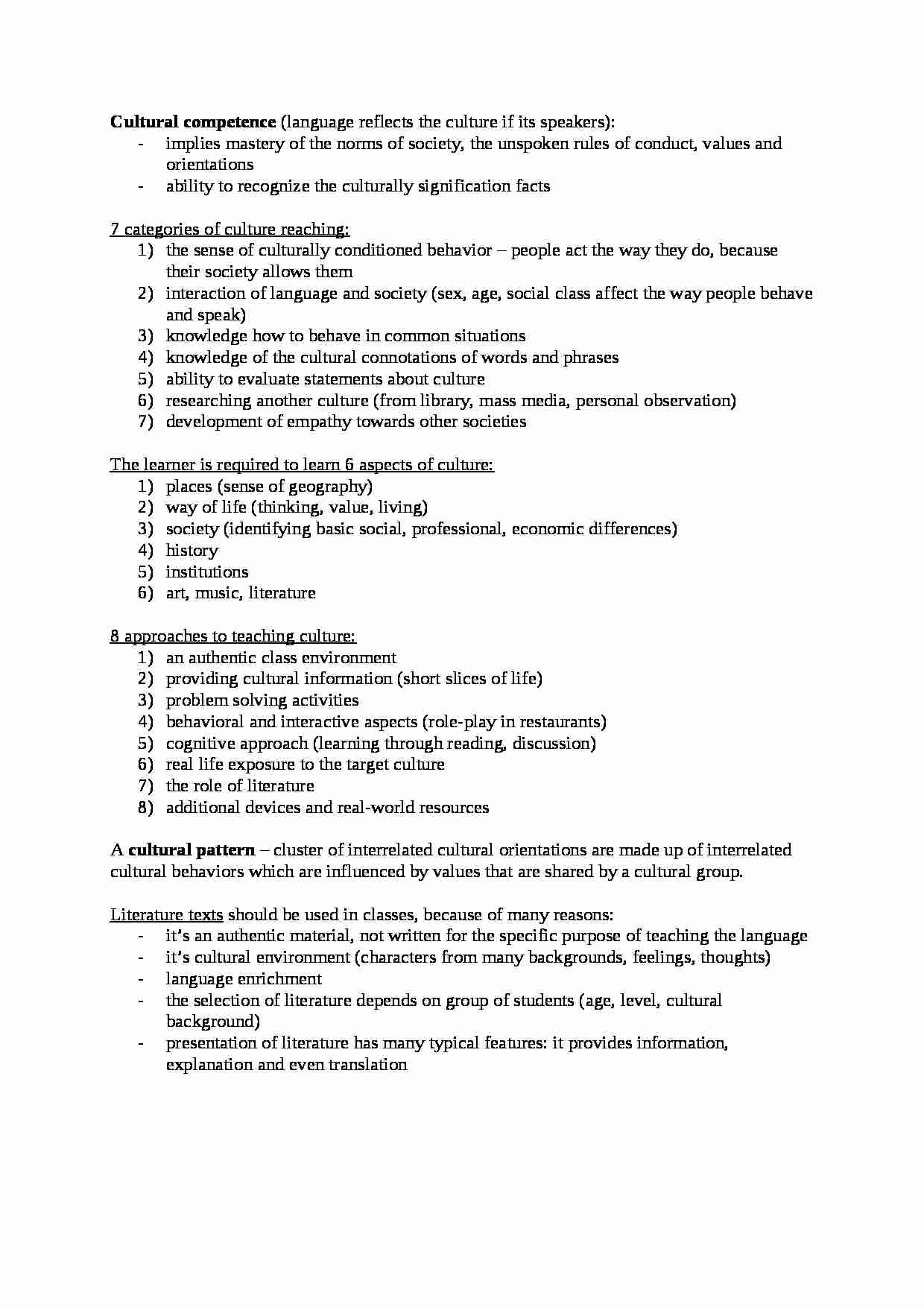
Cultural competence (language reflects the culture if its speakers):
implies mastery of the norms of society, the unspoken rules of conduct, values and orientations
ability to recognize the culturally signification facts
7 categories of culture reaching:
the sense of culturally conditioned behavior - people act the way they do, because their society allows them
interaction of language and society (sex, age, social class affect the way people behave and speak)
knowledge how to behave in common situations
knowledge of the cultural connotations of words and phrases
ability to evaluate statements about culture
researching another culture (from library, mass media, personal observation)
development of empathy towards other societies
The learner is required to learn 6 aspects of culture:
places (sense of geography)
way of life (thinking, value, living)
society (identifying basic social, professional, economic differences)
history
institutions
art, music, literature
8 approaches to teaching culture:
an authentic class environment
providing cultural information (short slices of life)
problem solving activities
behavioral and interactive aspects (role-play in restaurants)
cognitive approach (learning through reading, discussion)
real life exposure to the target culture
the role of literature
additional devices and real-world resources
A cultural pattern - cluster of interrelated cultural orientations are made up of interrelated cultural behaviors which are influenced by values that are shared by a cultural group.
Literature texts should be used in classes, because of many reasons:
it's an authentic material, not written for the specific purpose of teaching the language
it's cultural environment (characters from many backgrounds, feelings, thoughts)
language enrichment
the selection of literature depends on group of students (age, level, cultural background)
presentation of literature has many typical features: it provides information, explanation and even translation
... zobacz całą notatkę



Komentarze użytkowników (0)